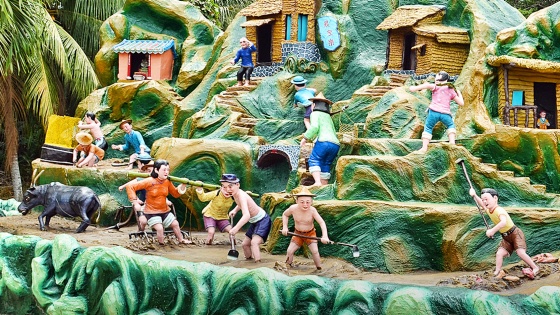Haw Par Villa
Haw Par Villa
Blog Article

Overview
Haw Par Villa, often called Tiger Balm Gardens, is definitely an legendary topic park situated in Singapore. This special attraction presents visitors a glimpse into Chinese mythology and folklore by means of its amazing and intricate statues, dioramas, and displays. Let us take a closer look at the essential things of the interesting desired destination.
History:
Haw Par Villa was at first developed by Aw Boon Haw, the magnate guiding the famed Tiger Balm ointment. The park opened its doorways in 1937 as a means to both entertain and teach people about traditional Chinese values, history, and beliefs. Through the entire many years, it has undergone several renovations but has managed to keep its primary attraction.
Mythological Figures:
On the list of most important highlights of Haw Par Villa is its broad selection of statues depicting figures from Chinese mythology and legends. Site visitors will come across figures like Journey towards the West's Sun Wukong (the Monkey King), 8 Immortals from Daoism, together with significant deities for example Guanyin (Goddess of Mercy) and Buddha Shakyamuni.
Concept Parks inside Haw Par Villa:
In just Haw Par Villa alone are a variety of distinct areas or sections:
10 Courts of Hell: Probably The most intriguing elements of Haw Par Villa is Checking out "The 10 Courts of Hell." In this article website visitors can witness graphic scenes depicting punishments for different sins according to common Chinese beliefs about afterlife retributions.
Taoist-Mythology Sculptures: This place showcases spectacular sculptures depicting tales from historical Taoist myths. These vibrant artworks provide to existence tales that were passed down through generations in vivid depth.
Backyard Sceneries: Further than mythological sculptures lie serene gardens full of picturesque landscapes adorned with beautiful bouquets and plants—a great space for people to relax amidst character's beauty or delight in a casual stroll.
Teochew Opera Centre: The Teochew Opera Centre is a conventional theater environment that consistently hosts performances in the Teochew opera, an important kind of Chinese musical drama with distinctive regional traits in its costumes, tunes, and storytelling.
Cultural Significance:
Haw Par Villa holds enormous cultural importance as it provides a chance to examine numerous areas of Chinese society, folklore, and religious beliefs. It serves as equally an open up-air museum along with a place for communal functions like festivals or instructional applications enabling website visitors to get insights into ancient Chinese traditions.
In addition, the park's initial intention was to coach guests about moral values via vivid depictions of heaven and hell – satisfying advantage and condemning vices. Consequently Haw Par Villa functions as not only an amusement park but additionally a moral information instructing vital moral principles from traditional Chinese philosophy.
Modern Relevance:
In spite of currently being designed many years back, Haw Par Villa proceeds to catch the attention of locals and tourists alike because of its uniqueness and timeless attraction. The park has managed to blend custom with contemporary elements by Arranging events such as artwork exhibitions, lantern festivals during mid-autumn celebrations showcasing the fusion between modern aesthetics and classic themes associated with the villa.
Recently, there are actually endeavours by authorities to refurbish portions of the attraction even though making certain its historical authenticity. click here This ongoing routine maintenance makes sure that Haw Par Villa remains obtainable for generations to return even though preserving its prosperous heritage value.
Summary:
Haw Par Villa stands out between Singapore's points of interest for its immersive encounter into legendary realms by intricately-made sculptures depicting deities, legends, morality tales and punishments in Taoist mythology-impressed gardenscapes - all within a reflective ecosystem emphasizing daily life lessons dependant on compassion demonstrated in the direction of others because it conveys ancient knowledge guided by moral principles conducive for self-enhancement located amidst wonderful scenic landscapes which makes it suitable both equally for cultural exploration fanatics serious about China's extensive mythology/history/backgrounds/legends at the same time(proporotinately with due rverence toward central theme of symbolizing conventional Chinese lifestyle and beliefs).